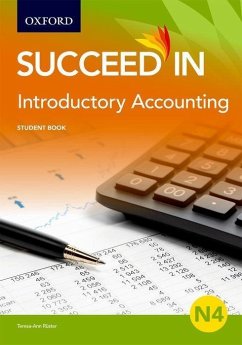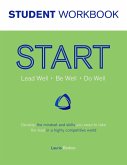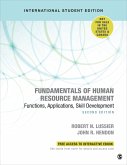Teresa-Ann Ruster
Introductory Accounting N4 Student Book
24,99 €
inkl. MwSt.
Versandfertig in über 4 Wochen

12 °P sammeln
Teresa-Ann Ruster
Introductory Accounting N4 Student Book
- Broschiertes Buch
- Merkliste
- Auf die Merkliste
- Bewerten Bewerten
- Teilen
- Produkt teilen
- Produkterinnerung
- Produkterinnerung
Developed especially for the TVET student at Introductory N4 level, Succeed in Introductory Accounting N4 provides students with the necessary theoretical knowledge to write their exams and to progress to the next level.
Andere Kunden interessierten sich auch für
![Student Solutions Manual to Accompany Health Economics, Second Edition Student Solutions Manual to Accompany Health Economics, Second Edition]() Frank A. SloanStudent Solutions Manual to Accompany Health Economics, Second Edition18,99 €
Frank A. SloanStudent Solutions Manual to Accompany Health Economics, Second Edition18,99 €![The Informed Student Guide to Management Science The Informed Student Guide to Management Science]() Hans G DaellenbachThe Informed Student Guide to Management Science37,99 €
Hans G DaellenbachThe Informed Student Guide to Management Science37,99 €![Becoming a Student of Leadership: Making Leadership a Practice Becoming a Student of Leadership: Making Leadership a Practice]() Jeffrey PageBecoming a Student of Leadership: Making Leadership a Practice24,99 €
Jeffrey PageBecoming a Student of Leadership: Making Leadership a Practice24,99 €![START Student Workbook START Student Workbook]() Laurie BodineSTART Student Workbook11,99 €
Laurie BodineSTART Student Workbook11,99 €![Fundamentals of Human Resource Management - International Student Edition Fundamentals of Human Resource Management - International Student Edition]() John R. HendonFundamentals of Human Resource Management - International Student Edition169,99 €
John R. HendonFundamentals of Human Resource Management - International Student Edition169,99 €![Entrepreneurship - International Student Edition Entrepreneurship - International Student Edition]() Christopher P. NeckEntrepreneurship - International Student Edition151,99 €
Christopher P. NeckEntrepreneurship - International Student Edition151,99 €![BA in Leadership and Management: Skills for the Workplace Student Yearbook, Final Year BA in Leadership and Management: Skills for the Workplace Student Yearbook, Final Year]() BA in Leadership and Management: Skills for the Workplace Student Yearbook, Final Year57,99 €
BA in Leadership and Management: Skills for the Workplace Student Yearbook, Final Year57,99 €-
-
-
Developed especially for the TVET student at Introductory N4 level, Succeed in Introductory Accounting N4 provides students with the necessary theoretical knowledge to write their exams and to progress to the next level.
Hinweis: Dieser Artikel kann nur an eine deutsche Lieferadresse ausgeliefert werden.
Hinweis: Dieser Artikel kann nur an eine deutsche Lieferadresse ausgeliefert werden.
Produktdetails
- Produktdetails
- Verlag: Hurst & Co.
- Seitenzahl: 256
- Erscheinungstermin: 18. September 2018
- Englisch
- Abmessung: 240mm x 172mm x 13mm
- Gewicht: 386g
- ISBN-13: 9780190443450
- ISBN-10: 0190443456
- Artikelnr.: 53606791
- Herstellerkennzeichnung
- Libri GmbH
- Europaallee 1
- 36244 Bad Hersfeld
- gpsr@libri.de
- Verlag: Hurst & Co.
- Seitenzahl: 256
- Erscheinungstermin: 18. September 2018
- Englisch
- Abmessung: 240mm x 172mm x 13mm
- Gewicht: 386g
- ISBN-13: 9780190443450
- ISBN-10: 0190443456
- Artikelnr.: 53606791
- Herstellerkennzeichnung
- Libri GmbH
- Europaallee 1
- 36244 Bad Hersfeld
- gpsr@libri.de
>
* Part 1 - Accounting theory, principles and concepts
* Chapter 1 - The profit motive
* Chapter 2 - Principles of increasing and decreasing wealth
* Chapter 3 - Capital increase by rendering a service and trading
* Part 2 - Forms of ownership
* Chapter 1 - Kinds of enterprise
* Part 3 - Documentation and authorisation of transactions
* Chapter 1 - Types of source documents
* Chapter 2 - The purpose and use of source documents in Accountancy
* Chapter 3 - Filing documents
* Chapter 4 - Authorising transactions
* Part 4 - Opening a trading concern
* Chapter 1 - Management decisions regarding the opening of a business
* Chapter 2 - Other preparations regarding opening a business
* Chapter 3 - Opening a current bank account
* Part 5 - Accounting principles and definitions
* Chapter 1 - Accounting concepts
* Chapter 2 - The Trading Activity Cycle
* Chapter 3 - The Accounting Equation
* Part 6 - Traqding concerns: Double-entry principles
* Chapter 1 - The double-entry principle
* Chapter 2 - General Ledger entries
* Chapter 3 - Posting to the General Ledger
* Part 7 - The Cash Receipts Journal
* Chapter 1 - The connection between the CRJ and the bank account
* Chapter 2 - Uding the CRJ as a subsidiary journal
* Chapter 3 - The analysis columns
* Chapter 4 - Entering the source documents
* Chapter 5 - Folio references in the General Ledger
* Chapter 6 - Totalling and cross casting the CRJ
* Chapter 7 - Posting to the General Ledger
* Part 8 - The Cash Payments Journal
* Chapter 1 - The connection between the CPJ and the bank account
* Chapter 2 - Using the CPJ as a subsidiary journal
* Chapter 3 - The analysis columns
* Chapter 4 - Entering source documents
* Chapter 5 - Folio references in the General Ledger
* Chapter 6 - Totalling and cross casting the CPJ
* Chapter 7 - Posting to the General Ledger
* Part 9 - The analysis cash book
* Chapter 1 - The connection between the ACB and the bank account
* Chapter 2 - The analyis columns
* Chapter 3 - Cash received and paid out
* Chapter 4 - Blancinbg the ACB
* Chapter 5 - Posting to the General Ledger
* Part 10 - The Petty Cash Journal
* Chapter 1 - The purpose of petty cash
* Chapter 2 - Transferring money from the bank account to the petty
cash account
* Chapter 3 - Using petty cash vouchers
* Chapter 4 - Opening a Petty Cash Journal
* Chapter 5 - Cash payments from petty cash
* Chapter 6 - Posting the petty cash entries and totals to the General
Ledger
* Chapter 7 - Balancing the Petty Cash account
* Part 11 - The wages and salaries journal
* Chapter 1 - Types of wage systems
* Chapter 2 - Overtime remuneration
* Chapter 3 - Deductions
* Chapter 4 - Drawing up a Wage Journal
* Chapter 5 - Drawing up a Salaries Journal
* Chapter 6 - Recording wage / salary transactions in the Cash Payments
Journal
* Part 12 - Banck reconciliation
* Chapter 1 - The aim of bank reconciliation
* Chapter 2 - Bank Statement: purpose and uses
* Chapter 3 - Reasons for the difference in balances
* Chapter 4 - Steps to reconcile the Bank Statement and the Cash
Journals / Cash Book
* Chapter 5 - Reconciliation of the Bank Statement from the previous
month
* Chapter 6 - Payment of stopped cheques
* Chapter 7 - Post-dated cheques
* Part 13 - End of accouning period procedures
* Chapter 1 - The Trial Balance
* Chapter 2 - Calculating profit
* Chapter 3 - The Balance Sheet
* Chapter 1 - The profit motive
* Chapter 2 - Principles of increasing and decreasing wealth
* Chapter 3 - Capital increase by rendering a service and trading
* Part 2 - Forms of ownership
* Chapter 1 - Kinds of enterprise
* Part 3 - Documentation and authorisation of transactions
* Chapter 1 - Types of source documents
* Chapter 2 - The purpose and use of source documents in Accountancy
* Chapter 3 - Filing documents
* Chapter 4 - Authorising transactions
* Part 4 - Opening a trading concern
* Chapter 1 - Management decisions regarding the opening of a business
* Chapter 2 - Other preparations regarding opening a business
* Chapter 3 - Opening a current bank account
* Part 5 - Accounting principles and definitions
* Chapter 1 - Accounting concepts
* Chapter 2 - The Trading Activity Cycle
* Chapter 3 - The Accounting Equation
* Part 6 - Traqding concerns: Double-entry principles
* Chapter 1 - The double-entry principle
* Chapter 2 - General Ledger entries
* Chapter 3 - Posting to the General Ledger
* Part 7 - The Cash Receipts Journal
* Chapter 1 - The connection between the CRJ and the bank account
* Chapter 2 - Uding the CRJ as a subsidiary journal
* Chapter 3 - The analysis columns
* Chapter 4 - Entering the source documents
* Chapter 5 - Folio references in the General Ledger
* Chapter 6 - Totalling and cross casting the CRJ
* Chapter 7 - Posting to the General Ledger
* Part 8 - The Cash Payments Journal
* Chapter 1 - The connection between the CPJ and the bank account
* Chapter 2 - Using the CPJ as a subsidiary journal
* Chapter 3 - The analysis columns
* Chapter 4 - Entering source documents
* Chapter 5 - Folio references in the General Ledger
* Chapter 6 - Totalling and cross casting the CPJ
* Chapter 7 - Posting to the General Ledger
* Part 9 - The analysis cash book
* Chapter 1 - The connection between the ACB and the bank account
* Chapter 2 - The analyis columns
* Chapter 3 - Cash received and paid out
* Chapter 4 - Blancinbg the ACB
* Chapter 5 - Posting to the General Ledger
* Part 10 - The Petty Cash Journal
* Chapter 1 - The purpose of petty cash
* Chapter 2 - Transferring money from the bank account to the petty
cash account
* Chapter 3 - Using petty cash vouchers
* Chapter 4 - Opening a Petty Cash Journal
* Chapter 5 - Cash payments from petty cash
* Chapter 6 - Posting the petty cash entries and totals to the General
Ledger
* Chapter 7 - Balancing the Petty Cash account
* Part 11 - The wages and salaries journal
* Chapter 1 - Types of wage systems
* Chapter 2 - Overtime remuneration
* Chapter 3 - Deductions
* Chapter 4 - Drawing up a Wage Journal
* Chapter 5 - Drawing up a Salaries Journal
* Chapter 6 - Recording wage / salary transactions in the Cash Payments
Journal
* Part 12 - Banck reconciliation
* Chapter 1 - The aim of bank reconciliation
* Chapter 2 - Bank Statement: purpose and uses
* Chapter 3 - Reasons for the difference in balances
* Chapter 4 - Steps to reconcile the Bank Statement and the Cash
Journals / Cash Book
* Chapter 5 - Reconciliation of the Bank Statement from the previous
month
* Chapter 6 - Payment of stopped cheques
* Chapter 7 - Post-dated cheques
* Part 13 - End of accouning period procedures
* Chapter 1 - The Trial Balance
* Chapter 2 - Calculating profit
* Chapter 3 - The Balance Sheet
* Part 1 - Accounting theory, principles and concepts
* Chapter 1 - The profit motive
* Chapter 2 - Principles of increasing and decreasing wealth
* Chapter 3 - Capital increase by rendering a service and trading
* Part 2 - Forms of ownership
* Chapter 1 - Kinds of enterprise
* Part 3 - Documentation and authorisation of transactions
* Chapter 1 - Types of source documents
* Chapter 2 - The purpose and use of source documents in Accountancy
* Chapter 3 - Filing documents
* Chapter 4 - Authorising transactions
* Part 4 - Opening a trading concern
* Chapter 1 - Management decisions regarding the opening of a business
* Chapter 2 - Other preparations regarding opening a business
* Chapter 3 - Opening a current bank account
* Part 5 - Accounting principles and definitions
* Chapter 1 - Accounting concepts
* Chapter 2 - The Trading Activity Cycle
* Chapter 3 - The Accounting Equation
* Part 6 - Traqding concerns: Double-entry principles
* Chapter 1 - The double-entry principle
* Chapter 2 - General Ledger entries
* Chapter 3 - Posting to the General Ledger
* Part 7 - The Cash Receipts Journal
* Chapter 1 - The connection between the CRJ and the bank account
* Chapter 2 - Uding the CRJ as a subsidiary journal
* Chapter 3 - The analysis columns
* Chapter 4 - Entering the source documents
* Chapter 5 - Folio references in the General Ledger
* Chapter 6 - Totalling and cross casting the CRJ
* Chapter 7 - Posting to the General Ledger
* Part 8 - The Cash Payments Journal
* Chapter 1 - The connection between the CPJ and the bank account
* Chapter 2 - Using the CPJ as a subsidiary journal
* Chapter 3 - The analysis columns
* Chapter 4 - Entering source documents
* Chapter 5 - Folio references in the General Ledger
* Chapter 6 - Totalling and cross casting the CPJ
* Chapter 7 - Posting to the General Ledger
* Part 9 - The analysis cash book
* Chapter 1 - The connection between the ACB and the bank account
* Chapter 2 - The analyis columns
* Chapter 3 - Cash received and paid out
* Chapter 4 - Blancinbg the ACB
* Chapter 5 - Posting to the General Ledger
* Part 10 - The Petty Cash Journal
* Chapter 1 - The purpose of petty cash
* Chapter 2 - Transferring money from the bank account to the petty
cash account
* Chapter 3 - Using petty cash vouchers
* Chapter 4 - Opening a Petty Cash Journal
* Chapter 5 - Cash payments from petty cash
* Chapter 6 - Posting the petty cash entries and totals to the General
Ledger
* Chapter 7 - Balancing the Petty Cash account
* Part 11 - The wages and salaries journal
* Chapter 1 - Types of wage systems
* Chapter 2 - Overtime remuneration
* Chapter 3 - Deductions
* Chapter 4 - Drawing up a Wage Journal
* Chapter 5 - Drawing up a Salaries Journal
* Chapter 6 - Recording wage / salary transactions in the Cash Payments
Journal
* Part 12 - Banck reconciliation
* Chapter 1 - The aim of bank reconciliation
* Chapter 2 - Bank Statement: purpose and uses
* Chapter 3 - Reasons for the difference in balances
* Chapter 4 - Steps to reconcile the Bank Statement and the Cash
Journals / Cash Book
* Chapter 5 - Reconciliation of the Bank Statement from the previous
month
* Chapter 6 - Payment of stopped cheques
* Chapter 7 - Post-dated cheques
* Part 13 - End of accouning period procedures
* Chapter 1 - The Trial Balance
* Chapter 2 - Calculating profit
* Chapter 3 - The Balance Sheet
* Chapter 1 - The profit motive
* Chapter 2 - Principles of increasing and decreasing wealth
* Chapter 3 - Capital increase by rendering a service and trading
* Part 2 - Forms of ownership
* Chapter 1 - Kinds of enterprise
* Part 3 - Documentation and authorisation of transactions
* Chapter 1 - Types of source documents
* Chapter 2 - The purpose and use of source documents in Accountancy
* Chapter 3 - Filing documents
* Chapter 4 - Authorising transactions
* Part 4 - Opening a trading concern
* Chapter 1 - Management decisions regarding the opening of a business
* Chapter 2 - Other preparations regarding opening a business
* Chapter 3 - Opening a current bank account
* Part 5 - Accounting principles and definitions
* Chapter 1 - Accounting concepts
* Chapter 2 - The Trading Activity Cycle
* Chapter 3 - The Accounting Equation
* Part 6 - Traqding concerns: Double-entry principles
* Chapter 1 - The double-entry principle
* Chapter 2 - General Ledger entries
* Chapter 3 - Posting to the General Ledger
* Part 7 - The Cash Receipts Journal
* Chapter 1 - The connection between the CRJ and the bank account
* Chapter 2 - Uding the CRJ as a subsidiary journal
* Chapter 3 - The analysis columns
* Chapter 4 - Entering the source documents
* Chapter 5 - Folio references in the General Ledger
* Chapter 6 - Totalling and cross casting the CRJ
* Chapter 7 - Posting to the General Ledger
* Part 8 - The Cash Payments Journal
* Chapter 1 - The connection between the CPJ and the bank account
* Chapter 2 - Using the CPJ as a subsidiary journal
* Chapter 3 - The analysis columns
* Chapter 4 - Entering source documents
* Chapter 5 - Folio references in the General Ledger
* Chapter 6 - Totalling and cross casting the CPJ
* Chapter 7 - Posting to the General Ledger
* Part 9 - The analysis cash book
* Chapter 1 - The connection between the ACB and the bank account
* Chapter 2 - The analyis columns
* Chapter 3 - Cash received and paid out
* Chapter 4 - Blancinbg the ACB
* Chapter 5 - Posting to the General Ledger
* Part 10 - The Petty Cash Journal
* Chapter 1 - The purpose of petty cash
* Chapter 2 - Transferring money from the bank account to the petty
cash account
* Chapter 3 - Using petty cash vouchers
* Chapter 4 - Opening a Petty Cash Journal
* Chapter 5 - Cash payments from petty cash
* Chapter 6 - Posting the petty cash entries and totals to the General
Ledger
* Chapter 7 - Balancing the Petty Cash account
* Part 11 - The wages and salaries journal
* Chapter 1 - Types of wage systems
* Chapter 2 - Overtime remuneration
* Chapter 3 - Deductions
* Chapter 4 - Drawing up a Wage Journal
* Chapter 5 - Drawing up a Salaries Journal
* Chapter 6 - Recording wage / salary transactions in the Cash Payments
Journal
* Part 12 - Banck reconciliation
* Chapter 1 - The aim of bank reconciliation
* Chapter 2 - Bank Statement: purpose and uses
* Chapter 3 - Reasons for the difference in balances
* Chapter 4 - Steps to reconcile the Bank Statement and the Cash
Journals / Cash Book
* Chapter 5 - Reconciliation of the Bank Statement from the previous
month
* Chapter 6 - Payment of stopped cheques
* Chapter 7 - Post-dated cheques
* Part 13 - End of accouning period procedures
* Chapter 1 - The Trial Balance
* Chapter 2 - Calculating profit
* Chapter 3 - The Balance Sheet







